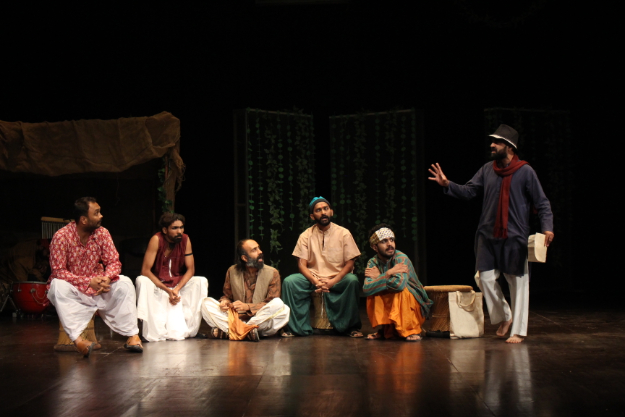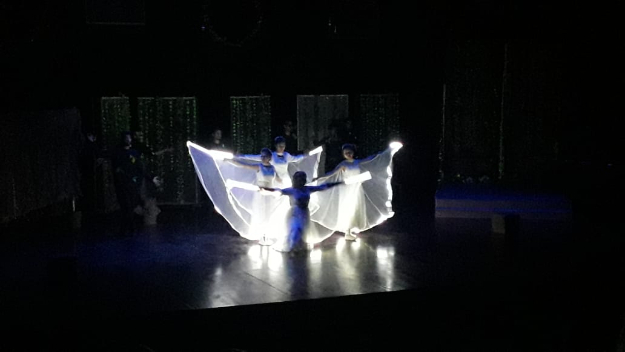
Directed by Meesam Naqvi, the play had garnered a house full hoping to be enchanted by the moon, the fairies and the never ending night, while also being entertained by the characters and their circumstances. And that is exactly what happened.
In the original play, Shakespeare interweaves four different worlds incorporating four different groups of people with each other. The first group includes the elders and authority figures including the King and Queen who are about to get married, along with Hermia’s father who prevents her from marrying the love of her life.
 Photo: File
Photo: FileThe second group is of the friends and lovers, who become the center of attention in the play due to their ambitious affection for each other – which misleads them into the forest. The third group is of the enchanted fairies of the forest accompanied by their king and queen while the forth group features the commoners who are preparing a play within the play for the king and queen’s wedding.
The young lovers feature cast members, Rahil Siddiqui as Sikandar (Lysander), Fajr Sheikh as Harmia (Hermia), Zain Nazar as Taimoor (Demetrius) and Noreen Mumtaz as Aleena (Helena).
The actors project a laughable chemistry, showcasing their love in an exaggerated manner, just the way Shakespeare’s original play depicts. They also put up an impressive show, regardless of some of their dialogues seeming forced - but once they are spell bound by the Puck, their delivery seems to instantly make sense.
In Naqvi’s adaptation, however, the fourth group takes the spotlight away from both the charming fairies, and the group of friends, owing to their extraordinary performance. Although they are meant to provide a comic relief in Shakespeare’s Midsummer Night’s Dream, along with presenting the reality of the elite lovers in a crass manner. In Beech Bahar Ki Raat Ka Sapna, their unsolicited humour and carefree attitude breaks the barrier between the characters and the audience.
 Photo: File
Photo: FileThe director’s choice of their local dialect is another plus, since Punjabi makes them seem even more comfortable with each other while enhancing the humour in their dialogues.
Another extraordinary performance is delivered by the Puck, also known as the Robin Goodfellow, played by Hammad Khan. The director’s choice of making him move from one corner of the stage to another is representative of his free spirit, regardless of him being the right hand of the king of the fairies.
However, one important thing that Naqvi does which makes the Puck and the commoners feel more relatable to the audience than the main leads is his weaving of these foreign characters with local archetypes. The commoners speak in an unapologetic colloquial manner, while the Puck acts like a chotu (that is supposed to be the modern and local replacement for a jester).

This is the one thing that seems to be missing in the main characters, which also prevents the suspension of disbelief. Another problem, which hinders this suspension, is the stating of the obvious, which relays the director’s lack of trust in the audience to decipher the character’s intention’s themselves. The illusion of that dream needs to break in moments where reality hits both the characters and the viewers, not unnecessarily.
However, the overall production is commendable, specifically the set design, costumes, lights and sound effects, which successfully lures the audience into a dream they wouldn’t want to wake up from.
Have something to add to the story? Share it in the comments below


















COMMENTS
Comments are moderated and generally will be posted if they are on-topic and not abusive.
For more information, please see our Comments FAQ